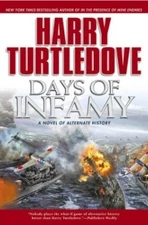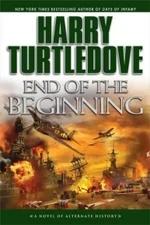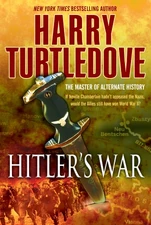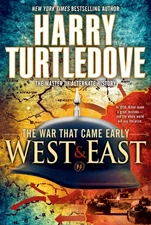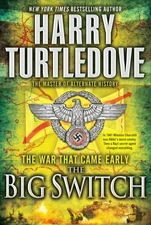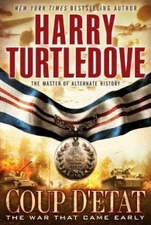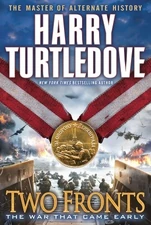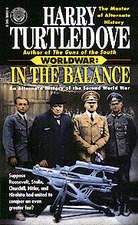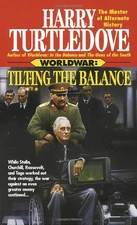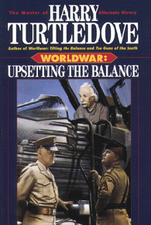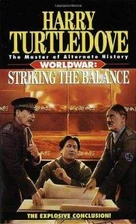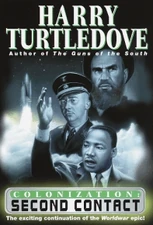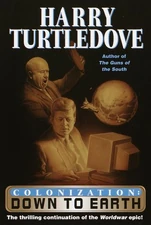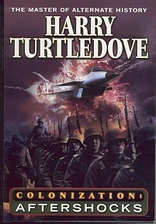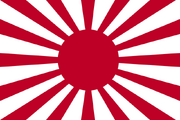
The Imperial Japanese Army (IJA) was the official ground based armed force of Imperial Japan from 1867 to 1945. It was controlled by the Imperial Army General Staff Office and the Ministry of War, both of which were nominally subordinate to the emperor as supreme commander of the army and the navy. Like so many other Japanese institutions and positions, the IJA was abolished at the end of World War II, and was replaced with the Self Defense Forces.
Imperial Japanese Army in Days of Infamy[]
The Imperial Japanese Army had been the main driving force behind Japan's military government, and its conquests in Manchuria and China. When relations between the US and the Empire spiraled into war, the IJA was used to secure the vital oil rich Dutch East Indies as well as surrounding territories in order to protect their empire. When Japan invaded Hawaii in late 1941, the Japanese 25th Army, under the command of Major-General Tomoyuki Yamashita, landed on the north shore of Oahu and rapidly drove straight for Honolulu, conquering the whole island chain by February of 1942. Although defense of the air was left to the navy, the Army brought in their own air force, after the Dolittle raid, much to the annoyance of the Navy.
When Japan had secured total control of the Pacific in June 1942, after the Navy defeated the US Pacific Fleet, the army met with the navy to hammer out details for further operations. Although committed to the war in the Pacific, the army high-command was far more interested in the war in China, along with the war between the Germans and the Russians than their own with the Americans. This they considered the Navy's war, and left the details up to them. The navy, on the other hand, couldn't conduct any offensive operations without the army, and the end result was to go on the defensive in the Pacific.
The traditional rivalry between the IJA and the IJN was in many ways intensified during the occupation of Hawaii, as many in the army saw the navy as 'snobs'. Although the IJN was the impetus for the invasion, and was instrumental in first breaking the US Naval forces protecting Hawaii, as the year passed, the IJN's supply lines were stretched to the breaking point, leading to many heated confrontations between the army and navy high-command in the islands.
As 1942 passed into 1943, the island garrison of two divisions was increased to four, then later five as it became clear that the US had not given up the war. When the US returned in mid 1943, the Army was forced to defend the islands. However, the US campaign of submarine warfare against Japanese shipping left Hawaii isolated, leaving he IJA in a progressively weakened position. After the Navy was defeated, the IJA took command of the islands, after it was informed that the Navy couldn't send any help. This meant that the army was expected to either hold the islands or fight to the death. Although General Yamashita hated this, he nonetheless obeyed, and fought ferociously to hold them, using the Royal Hawaiian Army as cannon fodder, while preserving his own troops. In the end, it was not enough, and the army was pushed back into the city of Honolulu, where it made a last stand within the Iolani Palace and the Honolulu Hale. When the battle was over, very few soldiers of the IJA were left alive.
Imperial Japanese Army in Joe Steele[]
After the Japanese Navy bombed Pearl Harbor, the Imperial Japanese Army invaded the Philippines, Malaya, and the Dutch East Indies.
After the war in the Pacific turned against them, the Army was pushed out of the Philippines, Iwo Jima, Okinawa and finally to Japan. During Operation: Downfall they put up a herculean fight against the US Army. Although the US army took great casualties, it failed to stop them. The situation took a turn for the worse when the Red Army invaded from the North before finally being crushed between the two juggernauts.
The IJA never officially surrendered but instead just ceased to exist, as no one was left to surrender in the end.
Imperial Japanese Army in "News From the Front"[]
While interviewing US soldiers from the Bataan front, many reports questioned the wisdom of fighting the Imperial Japanese Army who was clearly prepared, trained and equipped to fight a war in the Pacific.
Imperial Japanese Army in Southern Victory[]
The Imperial Japanese Army came into existence in 1869 as part of the Meiji Restoration's modernization of Japan. The Imperial Army was then used to fight its wars, as it secured its own empire, conquering Formosa, Manchuria, and Chosen. During the Hispano-Japanese War the IJA revived international acclaim by defeating a European power. However, after the capture of the Philippine port of Manila, it also received a rather sordid reputation as Spanish prisoners of war were mistreated and tortured.[1]
During the Great War, Japan sided with the Entente, and the Army played only a minor role compared to that of the Navy. After the war's end, the Army was used to secure the former European colonies of French Indochina and the Dutch East Indies, which France and Holland had been "persuaded" to sell.
In the 1930s, the Army found itself bogged down in a bloody war with China, as Japan battled various Chinese factions for control.
During the Second Great War, the Army was used to secure the US islands of Wake and Midway; however, the larger part of the Army was still committed in China. In early 1943, Japan abandoned its war with the United States and its alliance with the Entente, and instead chose to attack the British Malaya. The army was successful in defeating the lightly garrisoned defenders, and drove the British from the Pacific. By early 1944, Japan had sent Russia an ultimatum over Siberia, as the Imperial Army was on stand-by, ready to take the east part of the region by force.
By the war's end, Japan was unique among the three major powers of the world (the others being the US and Germany), as no superbombs had been deployed in its territory, and its Army had participated only briefly in either war.
Imperial Japanese Army in The War That Came Early[]
The Imperial Japanese Army was already engaged in a war with the Chinese when Germany invaded Czechoslovakia in 1938. Many of the US Marines in Peking didn't think too much of the IJA as they saw that the majority of their equipment was junk, but knew that they were tough and highly disciplined, and that they could be serious trouble if stirred up.
When the Soviet Union invaded Poland, the IJA saw their opportunity and struck, launching an all out invasion of Siberia. The Soviets fought tenaciously, inflicting heavy casualties on the Japanese Army. The Japanese were determined to capture Vladivostok, the only major Soviet port in the Pacific. The Soviets dug in and held out for a year, but the IJA was eventually successful. A new development in Western Europe forced the USSR to sue for peace so it could focus on its survival, ending the fighting in Asia.
Imperial Japanese Army in Worldwar[]
The Imperial Japanese Army was heavily engaged in a war with the various factions in China and the Allied Forces when the Race invaded in mid 1942. The Japanese army attempted to hold their position in China, however the Chinese themselves rose up against the Japanese, much like the Jews and Poles did in Warsaw. Faced with both rebellion from within and the Race's advanced weaponry, the IJA was defeated in China.
After being forced out of China, the IJA withdrew north to Manchukuo and Korea, where they fought a desperate holding action against Race. Unfortunately, their efforts were in vain and the Race managed to break through the Japanese lines at Harbin, forcing the Japanese Army into a headlong retreat. The Race conquered both Manchukuo and Korea after expelling the Japanese from the Asian mainland. However, Japan did manage to keep a hold of Indochina.
Many Japanese units found themselves cut off and isolated during the retreat. They joined Chinese forces in their guerrilla war against the Race. In comparison to Chinese guerrillas that knew when to keep a low profile, Japanese stragglers would recklessly attack any target of opportunity-and often paid dearly. Though the Japanese Army did put up a fierce resistance to the Race, their equipment, and most especially their tanks, were the subject of ridicule among Race fighting males.
References[]
- ↑ American Front, pg. 336, HC.
| |||||||||||||||||
| |||||||||||||||||||
| |||||||||||
| ||||||||||||||||||||||
| |||||||||||||||||||||||||
